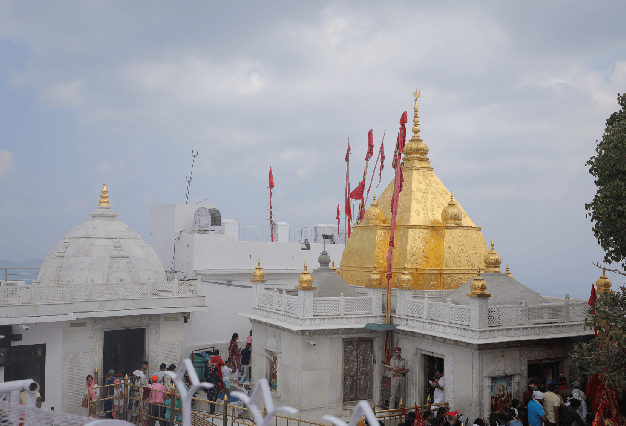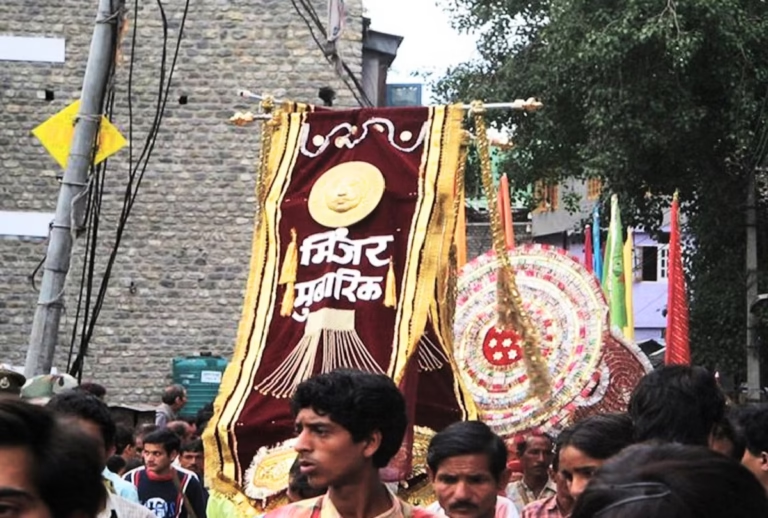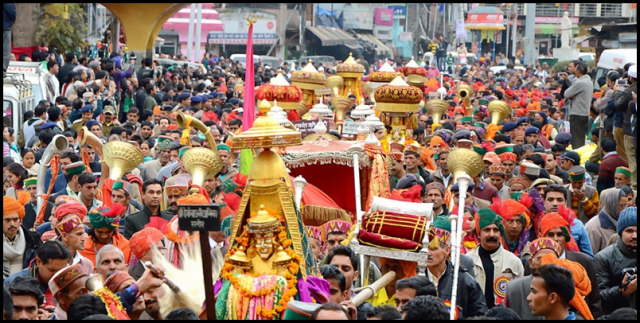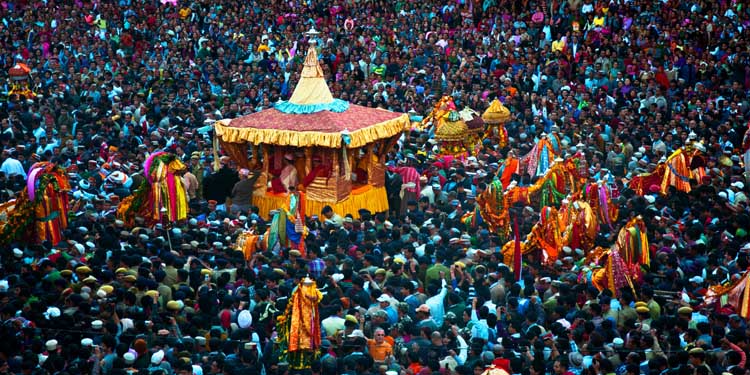Nestled atop a sacred hill in the Bilaspur district of Himachal Pradesh, the revered shrine of Naina Devi stands as a symbol of unshakable faith, divine strength, and ancient legend. Overlooking the shimmering waters of the Gobind Sagar Lake and surrounded by the picturesque Shivalik Hills, the temple is one of the most visited Shakti Peeths in North India and holds immense spiritual significance for millions of devotees.
The origins of the Naina Devi Temple trace back to the time of Goddess Sati and Lord Shiva. According to Hindu mythology, when Sati immolated herself in her father Daksha’s Yagya due to his disrespect toward Lord Shiva, a furious and grief-stricken Shiva carried her charred body across the universe. To pacify him and restore cosmic balance, Lord Vishnu intervened and used his Sudarshan Chakra to cut Sati’s body into 51 pieces, which fell in different locations across the Indian subcontinent. Each of these sites came to be known as a Shakti Peeth, where a part of Sati’s body is believed to have fallen.
The Naina Devi Temple is believed to be the spot where the eyes (Naina) of Sati fell. The name “Naina” literally means “eyes” in Hindi and Sanskrit, and the temple commemorates this divine event. As a result, Naina Devi is worshipped as the “Goddess of Sight,” and devotees believe she has the power to restore physical, mental, and spiritual vision.
Legend of the Temple’s Discovery
The legend behind the construction of the temple is closely associated with a local cowherd named Naina. As per folklore, he noticed that one of his cows would often go to a specific spot and release all her milk there. Curious, he began digging the area and discovered a natural cave with a divine idol of the goddess. Upon this discovery, the locals built a small shrine, and with time, it developed into a magnificent temple dedicated to Naina Devi.
Another popular legend relates to the Pandavas from the Mahabharata. It is believed that they meditated at this site during their exile and received blessings from the goddess. Over time, the significance of the temple grew, and it became a spiritual destination for devotees from different parts of India.
Architecture and Design
The temple’s architecture is a beautiful blend of traditional Hindu design and the simplicity of Himalayan temple styles. A long flight of stairs leads devotees to the sanctum, where the idol of Naina Devi sits adorned with bright red clothes and floral offerings. The inner sanctum houses the eyes of the goddess, symbolizing the body part that fell here, and is flanked by idols of Lord Ganesha and Kali.
The entire temple complex provides a breathtaking panoramic view of the Gobind Sagar Lake, which was formed by the Bhakra Nangal Dam on the Sutlej River. The location of the temple on a steep cliff adds to the sense of mysticism and serenity.
Spiritual Significance and Beliefs
Devotees believe that Naina Devi is a powerful protector who grants wishes, heals illnesses, and removes obstacles from one’s life. Many pilgrims, especially women, visit the temple to pray for the well-being of their families, for fertility, and for protection from evil influences. Offering red bangles, coconut, chunri (red cloth), and sweets to the goddess is considered auspicious.
The temple is particularly popular among devotees from North India who often undertake the pilgrimage on foot as a mark of devotion and penance.
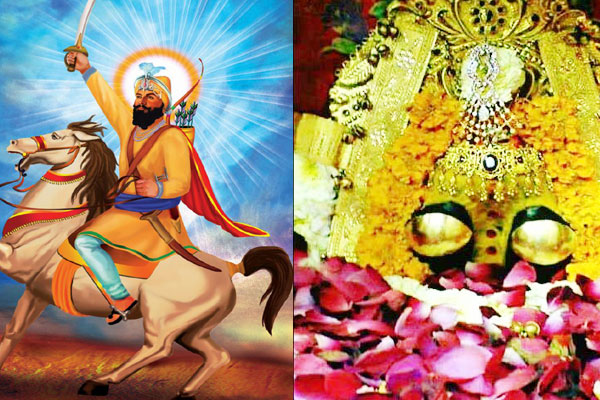
The temple also holds historical significance in Sikh history. It is believed that Guru Gobind Singh, the tenth Sikh Guru, visited the Naina Devi temple before his battle against the Mughals. He sought blessings from the goddess and performed penance here to gain spiritual strength. This association with Guru Gobind Singh makes the temple sacred not only for Hindus but also for Sikhs.
Nearby, the town of Anandpur Sahib, one of the most important Sikh religious sites, lies at the foothills, further cementing the spiritual bond between the two faiths.
Festivals and Celebrations
The most celebrated festival at Naina Devi Temple is Navratri, observed twice a year – during Chaitra (March-April) and Sharad (September-October). During these nine days, thousands of devotees visit the shrine to pay homage to the goddess. The temple is decorated with lights, flowers, and devotional flags, and hymns and aarti echo through the hills.
Another important event is the Shravan Ashtami Mela, which draws massive crowds. It usually occurs in the month of July or August and commemorates the deity with rituals, music, and spiritual gatherings. During these peak times, the temple complex remains open day and night, and arrangements are made by the local administration to ensure safety and order.
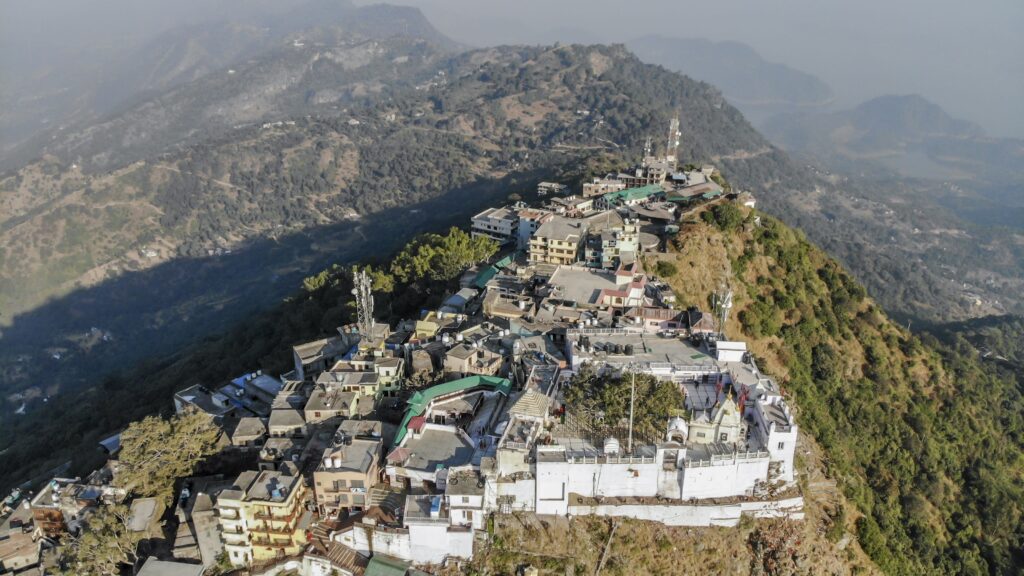
Accessibility and Travel Information
The Naina Devi Temple is located around 70 kilometers from Bilaspur and is well connected by road from Chandigarh, Anandpur Sahib, and Shimla. Devotees can reach the base by car or bus and then ascend either via the ropeway or by climbing approximately 1,000 stairs. For elderly and disabled pilgrims, palanquins and pony services are also available.
The nearest railway station is in Anandpur Sahib, around 30 kilometers away, and the closest airport is Chandigarh International Airport, about 100 kilometers from the temple.
Modern Amenities and Ropeway Facility
To accommodate the increasing number of pilgrims, the Himachal Pradesh Government has invested in infrastructure and development. A ropeway has been installed for easy access to the temple, especially for those who find it difficult to climb stairs. The journey by ropeway offers not just convenience but also a mesmerizing view of the surrounding landscape.
In addition, guest houses, food stalls, resting points, and clean drinking water facilities have been provided around the temple complex to ensure a comfortable experience for the visitors.
Naina Devi continues to be a source of spiritual energy and cultural identity for the people of Himachal and neighboring states. The temple is often mentioned in devotional songs, TV shows, and religious literature. Many newly married couples and families consider it auspicious to begin their life journey by taking the blessings of the goddess.
Despite the passage of centuries, the temple has retained its purity and continues to be a symbol of divine justice and motherly protection. Pilgrims believe that a visit to Naina Devi helps them find peace, clarity, and a sense of direction in life.

